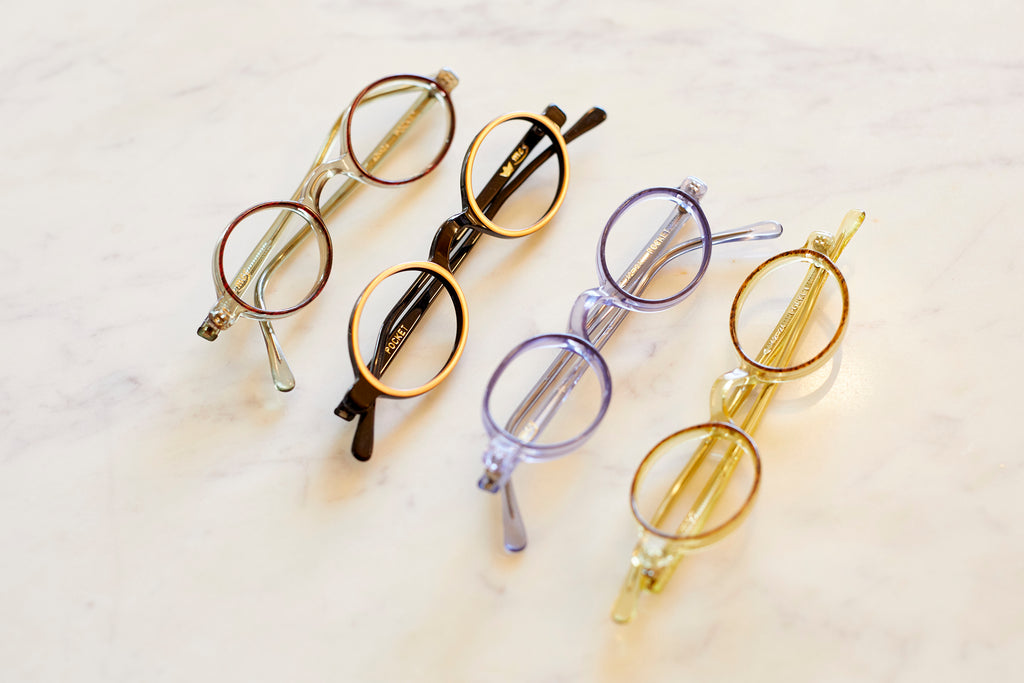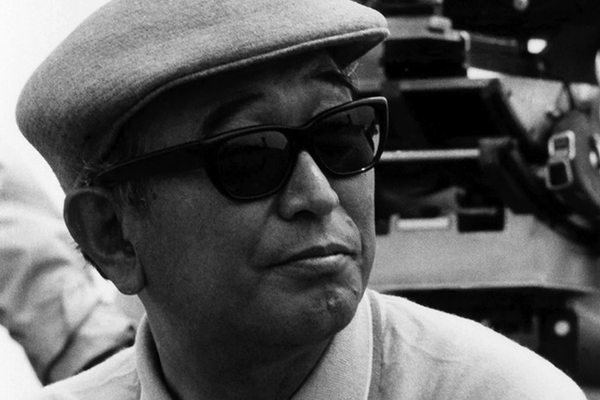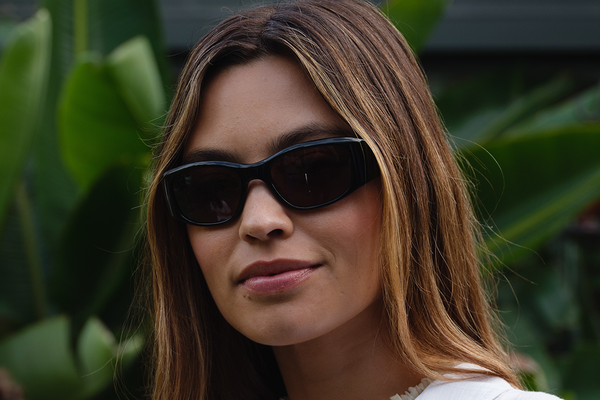By Cindy Leight
I grew up in Pico Rivera, and had a high school boyfriend who had a football scholarship to BYU. He got settled there, came back to California and took me back to Utah with him. I was 17. I threw all my shit in his truck and we left. I went to the unemployment office to get a job. I always wore and loved glasses. I used to save money to buy Foster Grants at thrifties. When I went to the interview in Provo, Utah, at the unemployment offices, one of the choices they gave me for a job was with an optometrist named J.T. Harrison. I said, “Yes! Send me there! Mr. Harrison was an old man, very old school—his dad was an ophthalmologist, his grandfather was an ophthalmologist. He told me: “This is a profession, and if I hire you, I can train you. I’ll teach you how to cut lenses!” He paid me $77 a week in cash. He taught me how to cut and grind on an old Coburn Technologies machine, and I loved it. That’s how I got in the optical business.


I remember my aunt took my mother to the Westminster Mall in Huntington Beach after it opened in 1977. It was probably one of the first malls in the state. They had fancy optometrists there who sold designer glasses. My mom called me and said: “It’s the same thing you’re doing, but the girls are dressed all fancy and wearing Dior glasses, you could work there!”
So I went back to Utah, packed up and left, and started getting jobs in malls. Santa Anita Fashion Plaza, Glendale Galleria, and West Covina Mall. I worked for a bunch of different doctors and was making a lot of money. I was 19 and bought a 914 Porsche. I was like, “This it it!”


I was a natural at selling. I knew I was good. There was a Luxottica rep who everyone loved named Ray Simpson. One day we were hanging out and I said “Ray I’m tired of moving around. I want to work for the best. Where’s the best optician in Los Angeles?” And he said Optica, Marvin Freeman’s shop in Southcoast Plaza. But he tells me it’s tough there—there are a lot of wealthy people, and it’s hard to get a job.
I called and got an interview. This was 1979. I show up to meet Marvin, and Larry Leight comes out and tells me Marvin is running late. I’m fresh off my honeymoon in Hawaii. I still have flowers in my hair. Larry goes: “What makes you think you can get a job here? Do you even do Thank You cards where you work?” I laughed. Larry was tough right off the bat. Then Marvin comes in, and says “I have the best opticians in all of California. Why should I hire you?” I said “Because I can sell snowballs to Eskimos. Period.” I got the job.


Photo (right), Translated from Dutch: Designed by Larry and Cindy Leight, the frames exemplify the turn of the century. Sting, Victoria Principal and Cher, among others, wear eyeglass frames from the Oliver Peoples collection.
Larry always liked me. We’d all go out to drink after work, and eventually I got an annulment and we got together. The malls were open until nine so we all worked late like a big family. Larry and I opened so many mall stores for Marvin: the Houston and Dallas Gallerias, the Larry Levy building in Chicago, Trump Towers, Rodeo Drive. We moved to Beverly Hills to open Rodeo, and Garrett was conceived. We were the young stars at Optica—we bought a house in Laguna Beach, a Mercedes and a Jeep, and Larry was always surfing on our days off. We met and made friends with a lot of Saudi families. They’d bring their mothers into the store and spend a hundred thousand dollars with us on diamond-encrusted glasses. We were both young, but we were learning the game quickly. That time at Optica was our apprenticeship for Oliver Peoples and how to do business with the very rich and powerful. Marvin was the first optician to advertise in Vogue Magazine with Christina Ferrare. For the ad, Marvin had copied a rimless beveled pair of glasses made by Polaris and used it to make his own frame. So we learned how to make frames, too. Larry would travel to Europe with Marvin for the eyewear shows and we started to understand that wholesale was the way to go. Marvin could see our wheels turning so he would tell us “Shut up! Don’t be getting any big ideas!”


But we had all the ideas we needed. We had big dreams of doing our own thing. So we left. Larry and I were doing a lot of drugs at the time. Cocaine was big then, and we’d stay up all night and do coke and draw on Brooke Shields’, Christie Brinkley's, Cindy Crawford's and other iconic faces in magazines, yelling over each other saying: “We’re going to design this!” Coked out creative visualization was our thing. It was crazy and fun, and I’m so glad I don’t do that shit anymore. I’m sober 28 years now. Larry wound up having an intervention for me.
Before we left Optica, we had one of our contacts make us a flip-up pair of sunglasses. We called that company Oliver Peoples I'dentity. Just about the time Andy Warhol died, on the last cover he ever did for Vogue in Manner, he wore our flip-up on the cover. People have copied that pair just recently.


Oliver Peoples was a hit from the start. We had all the Saudi families bringing their people there, and every major celebrity at the time walked through our doors. Hanks, Belushi, Aykroyd, Eddie Murphy, Sharon Stone. We were partying all over the world. It was intense. Our first tradeshow in Europe, we sold half a million dollars. We had wondered how we’d get the money for wholesale. Larry and I were still partying, but we knew we had to stop. All Larry did was work. I got exhausted and burnt out after five years. I left Larry and Oliver Peoples and took Garrett to Venice. I didn’t want him to grow up sheltered in Beverly Hills. I wanted him to be in a similar environment to the one I grew up in, around all kinds of people. Of course, now, he’s pretty happy we did that!
A few years later, I ended up opening my own shop on Robertson, Cindy Leight Opticians, in 2000. It did really well, and was getting a lot of press and I was scrambling again. Garrett was going off to college, and I thought: Jeez, I’m sober but still chasing all this fame and money like a drug. I need to slow down. So I have.


Once you have worked hard and done all the footwork and succeeded, I believe it becomes a formula—and you can duplicate it again and again if you choose too. If you follow your passion anything is possible. My experience working in a service-oriented industry at a young age and helping people look and feel better about themselves and their appearance—helping them to literally see more clearly—helped me to also have clarity. And today I try every day to be of service to everyone I come across.



